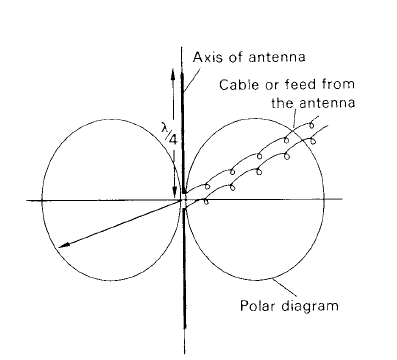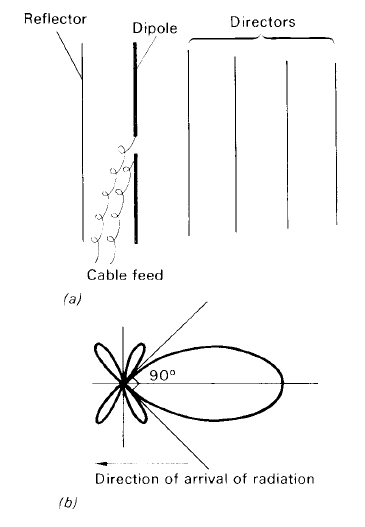
Antenna design: The Yagi antenna
 المؤلف:
A. Roy, D. Clarke
المؤلف:
A. Roy, D. Clarke
 المصدر:
Astronomy - Principles and Practice 4th ed
المصدر:
Astronomy - Principles and Practice 4th ed
 الجزء والصفحة:
p 358
الجزء والصفحة:
p 358
 31-8-2020
31-8-2020
 2151
2151
Antenna design: The Yagi antenna
The directivity of a dipole antenna is greatly improved by applying extra elements. They are not electrically connected to the antenna or the receiver and are said to be parasitic. Their purpose is to give radiative reaction with the dipole so that the polar diagram achieves greater directivity. The Yagi antenna usually has one reflecting rod and a few directors. It is schematically illustrated in figure 2(a). The polar diagram for this type of antenna is illustrated in figure 2(b) and it should be compared with figure 1. It will be seen that it has little response in the backward direction. The small side lobes may sometimes be troublesome by picking up signals which are out of the main beam. Its absolute power gain depends on the number of directors but a law of diminishing returns keeps this number to be about a maximum of 12, when G is about 50—its beamwidth is of the order of 20◦.
Again, however, the parasitic antenna by itself has little application to radio astronomy.

Figure 1. The polar diagram of a half-wave dipole antenna.

Figure2. The parasitic or Yagi antenna and its polar diagram
 الاكثر قراءة في مواضيع عامة في علم الفلك
الاكثر قراءة في مواضيع عامة في علم الفلك
 اخر الاخبار
اخر الاخبار
اخبار العتبة العباسية المقدسة


